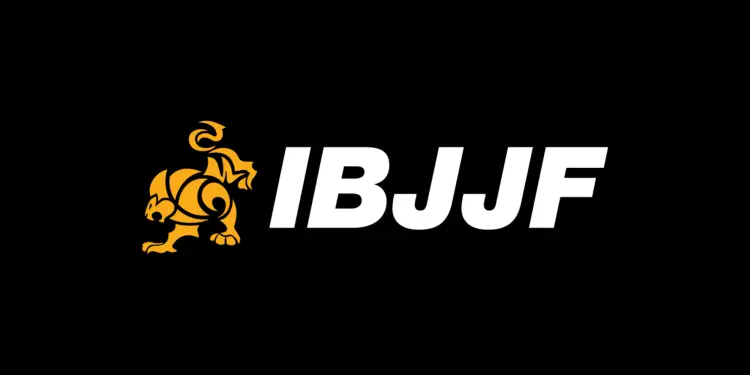The IBJJF rules are the most commonly-used in the sport and although they’ve undergone many changes over the years since their inception, there are still several ways they could improve. The IBJJF is not a governing body and because of that, it’s relatively easy to make sweeping changes that would produce a better sport from either the spectator or competitor’s point of view. Although they have made major improvements in the past like legalizing the use of heel hooks in adult brown and black belt no gi competition, they’ve also been notoriously slow to make those changes.
5 Simple Changes To Improve IBJJF Rules
Any large changes made to the IBJJF rules would obviously come with big risks, as they would fundamentally change how the sport looks. A simple look at the difference between matches between the same competitors under in ADCC and IBJJF events shows that the ruleset has a huge impact on how the match plays out. That’s why simple and smaller changes are likely to be more beneficial, because they can make things fairer for competitors and more entertaining for fans while still ensuring that the sport looks largely the same. These 5 amendments to the ruleset would all produce a much better sport, without turning it into something else entirely.
Reward Other Forms Of Back Control
The IBJJF has an unusual view of what does and does not constitute back control, for the purpose of rewarding points. The IBJJF points system states that having both hooks in is necessary to score 4 points for taking the back, but crossing the legs in any fashion does not score any points. This simply doesn’t make any sense on the face of it, as using a body-triangle or even a simple crossing of the ankles doesn’t functionally change the fact that this is a dominant position. Moreover, many competitors actually consider a body-triangle to be the superior method of controlling the back. This puts them in the bizarre position of having to control with hooks for long enough to score points, before then securing their preferred method of control.
This is probably the simplest and easiest of these changes to the IBJJF rules to enact, as they would just need to amend the definition of back control. Chest-to-back connection and both legs around the waist is all that should be required in order to score 4 points for back control. Outside of that, it shouldn’t really matter how you choose to control the opponent with either your legs or arms. This should hopefully have the effect of encouraging athletes to seek the truly optimal method of back control rather than being forced to use hooks to score points, and will lead to a higher general technical level in that position.
The Push Out Rule
This is actually one of the most important rules in freestyle wrestling, but could be used to make changes to the way that IBJJF competition looks on the feet. At the moment, competitors do have an obligation to engage with one another on the feet but the level of engagement that is required is actually pretty low. Forward movement isn’t a necessity and this often results in competitors going out of bounds in order to avoid being taken down. Some grapplers have even made a whole career out of playing on the edge of the matted area in order to become incredibly difficult to take down.
A simple way to fix this issue is to reward a competitor with a single point if they are able to drive a standing opponent outside of the matted area. A single point can make the difference between winning and losing in a close match, and elite competitors would never be willing to concede it. This means that playing on the edge of the matted area will no longer be a viable tactic, and competitors will be encouraged to maintain forward pressure. This will also open up the opportunity for more frequent and higher-amplitude takedowns, creating a much more entertaining sport on the feet.
End The Need To Lower An Opponent Jumping To Closed Guard
Pulling guard is an incredibly important part of BJJ and is one of the main elements that differentiate it from other grappling styles, and create a more open ruleset. While guard pulling in general is vital, jumping to closed guard is an incredibly dangerous practice that often results in devastating knee injuries. Rather than just being because of the technique itself, these injuries actually occur because of the way that the IBJJF rules interact with jumping to closed guard and changes could be made to make it safer. This is because slams are not legal under IBJJF rules and the standing grappler has the responsibility to lower an opponent to the ground safely.
This is one of the IBJJF rules that does make sense in isolation because it prevents grapplers from being slammed, and this isn’t one of the changes that need to be made. Instead, it just needs to be amended in the specific scenario that one grappler chooses to jump to closed guard rather than being picked up themselves. If that happens, then the competitor receiving that technique should not have any responsibility over how hard or fast their opponent lands on the mat. This would mean that competitors wouldn’t have to stay standing and risk their knees while balancing, making the sport far safer while not banning any legitimate techniques.
More Aggressive Stalling Penalties
Every sport needs rules to protect against excessive stalling and although the IBJJF does have them, some changes could be made to the way that they are enforced. The difficulty comes from the fact that a submission finish is the ultimate goal of any BJJ match and as any competitor will tell you, that takes time to achieve. At the same time, the threat of a submission is constantly present and can be used to punish any mistake made by an opponent. These two things combined mean that the line between a methodical approach and stalling is incredibly blurry, with many competitors stepping over that line without receiving any punishment at all.
The answer to this is to make changes to the speed at which referees apply stalling penalties under IBJJF rules. The threat of receiving penalties is often a big motivator for pursuing action and engaging more, particularly when excessive penalties result in disqualification. There’s already a good format for this in place too, as they could simply take inspiration from the Quintet ruleset and their approach to stalling. Not only do they hand out penalties much quicker than the IBJJF does, but they also give penalties for stalling in dominant positions like mount. This would not only remove the ability for competitors to win without pursuing the finish, but it would also create much more exciting matches from start to finish.
Legalize Heel Hooks In The Gi
This is probably one of the most contentious changes that the IBJJF could make to their rules, and a number of competitors wouldn’t actually be happy to see this take place. Heel hooks are often described as incredibly dangerous but the truth is that their risk is often overstated and while injuries do happen, they’re nowhere near as common as some make out. The added friction available when competitors are wearing a gi is often explained as a compounding factor in this risk too, but that hasn’t appeared to be the truth whenever competitions do allow gi competitors to heel hook one another.
While more aggressive stalling penalties in general would be welcomed under IBJJF rules, if both of these changes are made then one of the biggest problem-areas of the sport would be instantly fixed. 50/50 often becomes a tedious position in the gi where neither competitor is really able to progress from the position or attack the legs. If heel hooks are legalized then that opens up a huge avenue for both competitors to pursue a submission finish and it would result in a higher percentage of finishes, along with far less time spent in a stalled out 50/50 position.
For more of our opinion pieces on various topics, visit our opinion piece archives.











